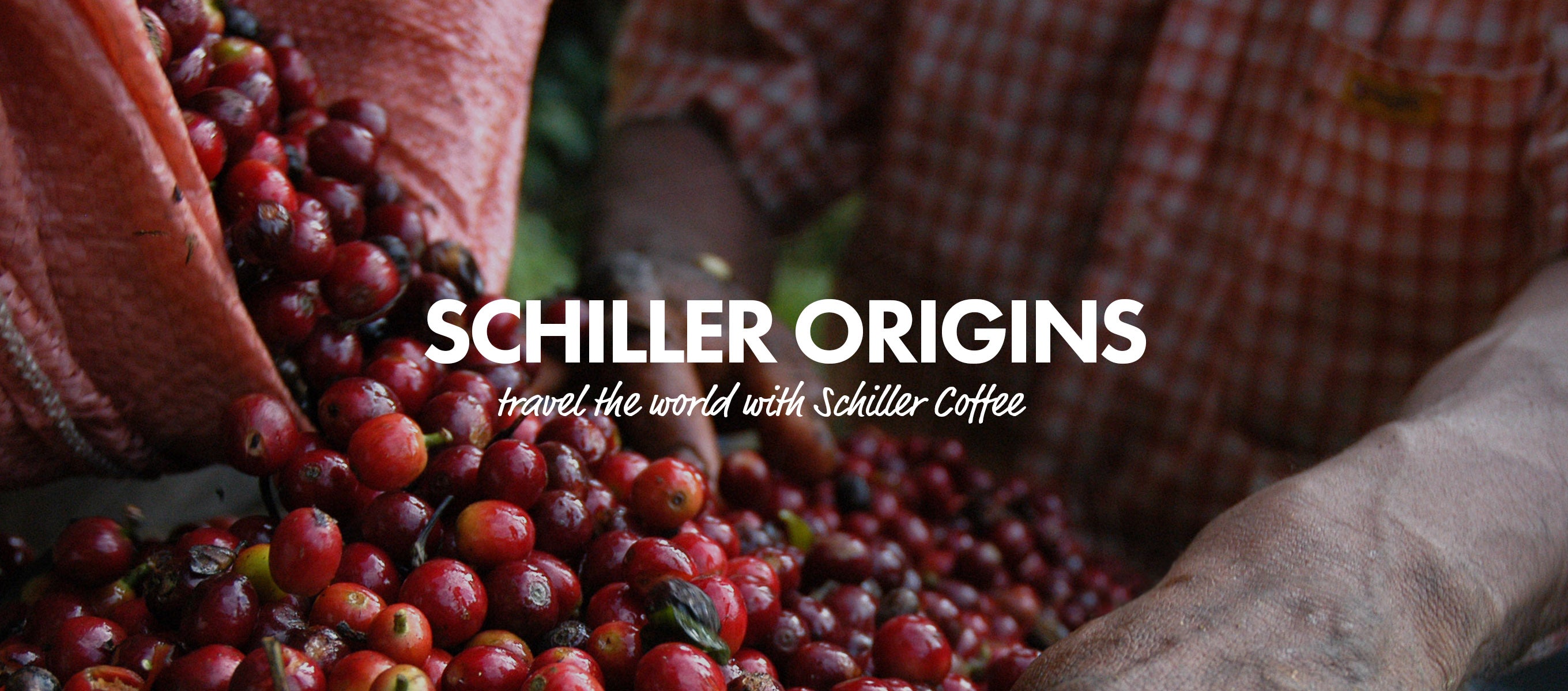Origins



23° Nord und 25° Süd sind die Breitengrade in denen Kaffee seine bevorzugten Bedingungen vorfindet. Frei von Temperaturextremen und eine Niederschlagsmenge von 1500 bis 2000 Millimeter im Jahr je nach Kaffeesorte. In diesem Kaffeegürtel befinden sich einige der ärmsten Länder der Welt und wir legen grossen Wert darauf nur von seriösen Plantagen unseren Kaffee zu beziehen. Übermässiger Kaffeeanbau laugt den Boden aus und mindert die Qualität, nicht zuletzt deshalb ist Nachhaltiger Anbau hier unserer Hauptaugenmerk.
23° North and 25° South are the degrees of latitude where Coffee finds the perfect environment to grow. Free of extreme temperature and a amount of precipitation of between 1500 and 2000 millimetres per year, depending on the coffee. Some of the earth’s poorest counties are located within this Coffee-Belt and we attach great importance to source our coffee only from respectable plantations. Excessive cultivation of coffeewill eventually leach out the soil and reduces quality drastically, this is why sustainable cultivation is our main focus.

Bei der Auswahl unserer Kaffeebohnen spielt die Herkunft die Hauptrolle. Die Aufbereitung, das Entfernen von Schalen und Häuten der Bohne geschieht je nach Anbaugebiet und Sorte entweder trocken ( Robusta und bestimmte Arabica Sorten aus Brasilien und Äthiopien ) oder nass ( Arabica Sorten aus den anderen Gebieten rund um die Welt). Bohnen zu waschen ist die aufwändigere Methode, bietet aber die bessere Qualität.
When selecting our coffee beans its origin is of great importance. The treamtment of the beans, removing the shell and skins is made either dry ( robusta and certain coffee from Brazil and Ethiopia ) or wet ( Arabica from all other areas around the globe ). Washing the beans is the more costly method but offers better quality.

Die klassische Trommelröstung mag die weniger effiziente Methode sein, verglichen mit dem industriellen Heissluftverfahren, allerdings macht sich der Aufwand wieder im Geschmack bezahlt. Die Bohnen werden um ein vielfaches länger bei niedrigerer Temperatur geröstet wobei die Aromen genügend Zeit bekommen sich voll und ganz zu entfalten. Wieviel Zeit genau ist übrigends das wohlgehütete Geheimnis jedes guten Rösters da hier ein erheblicher Teil seiner „Handschrift“ durch Variation der Temperatur und Zeit entsteht.
Classic Drum Roasting may be the less efficient method compared to industrial roasting with hot air but the extra effort pays off in taste. The beans are being roasted at much lower temperature for a longer timer which gives the aroma time to develop fuly in the beans. How long the beans are exactly roasted is a well kept secret of each roaster since this is where most of the signature taste is being developed by variation of both temperature and time.

So aufwändig die Herstellung von Schiller Kaffee auch ist, am Ende zählt das Ergebnis. Schiller Kaffee geniesst man am besten gemeinsam mit freunden und Familien denn darin liegt ein großer Teil unserer Motivation. Egal ob in seiner reinsten Form, als Espresso oder in der Variation mit Milch und Sirup. Schiller Kaffee bezieht sein Aroma aus jedem Schritt eben jenes Weges der hinter ihm liegt. Für uns ist jede Tasse ein kleines Wunder das uns innehahlten und den Moment wie das Leben an sich geniessen lässt.
As complex as the creation of Schiller Coffee may be, its the result that counts eventually. Schiller Coffee is best enjoyed with friends and family since here lies a great part of our motivation. Served in its purest form, as espresso or in many varieties with milk or sirup, Schiller Coffee gains its aroma from each step it has made along the way. For us each cup is a tiny miracle that helps us enjoy the moment and life itself.

